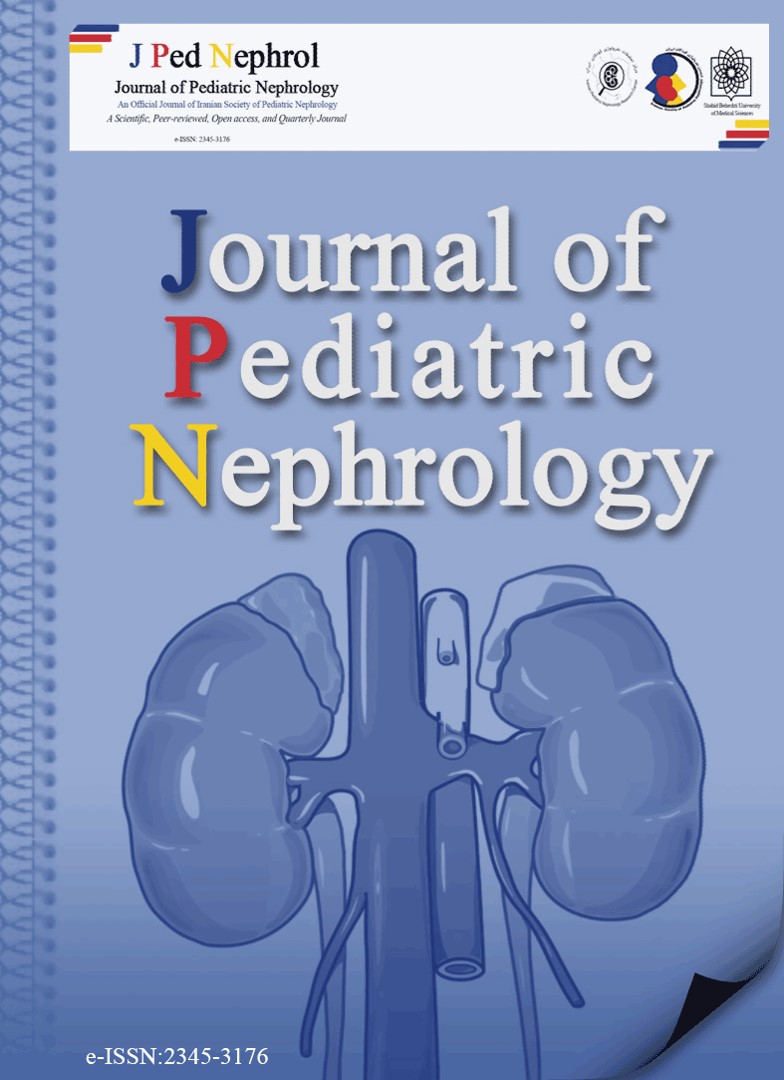Background and Aim: Quality of life has been improved by kidney transplantation (KT), especially in pediatric patients. Children have a higher risk of rejection and graft loss compared to adults. It is important to determine the pediatric graft outcome and prevent early graft loss, if possible. This study was done to evaluate graft and patient survival in pediatric patients after kidney transplantation.
Methods: This cross-sectional study was done on all children below 18 years old that underwent kidney transplantation in Shahid Beheshti Kidney Transplant Center. Sex, time of transplantation, serum creatinine, acute rejection, viral infection (cytomegalovirus), and graft survival and patient survival were recorded.
Results: Fifty-eight patients underwent kidney transplantation. The mean serum creatinine level was 0.89±0.88 mg/dl, 0.7±1.29 mg/dl, 058±0.92 mg/dl, 0.9±0.83 mg/dl and 1.32±0.91 mg/dl on day 1, 2, and 3 post KT, discharge day, and the last follow-up visit, respectively. Graft survival was 93.1%, 89.5% and 86.5% at 1, 5 and 10 years, respectively. During the study, five patients expired and therefore patient survival was 99.6%, 92.3% and 92.3% at 1, 5 and10 years, respectively.
Conclusion: This study, compared to other studies, showed that the graft and patient survival were acceptable. More attention should be paid to improve the outcome.

